What is a Slaughterer and Meat Packer?
Occupation Description Work in slaughtering, meat packing, or wholesale establishments performing precision functions involving the preparation of meat. Work may include specialized slaughtering tasks, cutting standard or premium cuts of meat for marketing, making sausage, or wrapping meats.
Life As a Slaughterer & Meat Packer
- Slit open, eviscerate, and trim carcasses of slaughtered animals.
- Saw, split, or scribe carcasses into smaller portions to facilitate handling.
- Shackle hind legs of animals to raise them for slaughtering or skinning.
- Remove bones, and cut meat into standard cuts in preparation for marketing.
- Stun animals prior to slaughtering.
- Grind meat into hamburger, and into trimmings used to prepare sausages, luncheon meats, and other meat products.
Featured schools near , edit
Slaughterer & Meat Packer Needed Skills
When polled, Slaughterers and Meat Packers say the following skills are most frequently used in their jobs:
Speaking: Talking to others to convey information effectively.
Active Listening: Giving full attention to what other people are saying, taking time to understand the points being made, asking questions as appropriate, and not interrupting at inappropriate times.
Other Slaughterer & Meat Packer Job Titles
- Seafood Processor
- Pig Sticker
- Beef Splitter
- Cold Storage Worker
- Wrap Around Facilitator
Slaughterer & Meat Packer Employment Estimates
In the United States, there were 82,500 jobs for Slaughterer and Meat Packer in 2016. There is little to no growth in job opportunities for Slaughterer and Meat Packer. The BLS estimates 10,100 yearly job openings in this field.
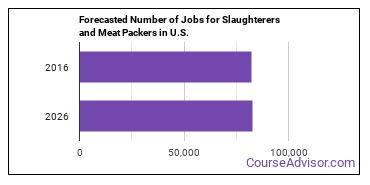
The states with the most job growth for Slaughterer & Meat Packer are Utah, Georgia, and Arizona. Watch out if you plan on working in Virginia, Kansas, or Wyoming. These states have the worst job growth for this type of profession.
Salary for a Slaughterer & Meat Packer
Slaughterers and Meat Packers make between $20,810 and $37,480 a year.
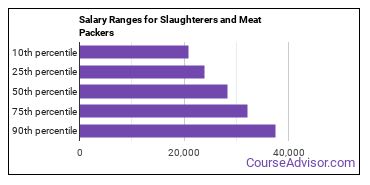
Slaughterers and Meat Packers who work in Maryland, Nebraska, or Kansas, make the highest salaries.
Below is a list of the median annual salaries for Slaughterers and Meat Packers in different U.S. states.
| State | Annual Mean Salary |
|---|---|
| Alabama | $21,740 |
| Arizona | $33,330 |
| Arkansas | $27,640 |
| California | $27,980 |
| Connecticut | $27,550 |
| Delaware | $28,280 |
| Florida | $26,270 |
| Georgia | $24,920 |
| Hawaii | $26,150 |
| Idaho | $24,360 |
| Illinois | $30,640 |
| Indiana | $30,110 |
| Iowa | $31,940 |
| Kansas | $32,310 |
| Kentucky | $27,170 |
| Louisiana | $22,680 |
| Maryland | $35,010 |
| Massachusetts | $28,270 |
| Michigan | $27,920 |
| Minnesota | $31,540 |
| Mississippi | $25,780 |
| Missouri | $28,840 |
| Nebraska | $32,610 |
| New Hampshire | $25,400 |
| New Jersey | $28,120 |
| New Mexico | $28,460 |
| New York | $30,280 |
| North Carolina | $29,070 |
| North Dakota | $30,160 |
| Ohio | $28,070 |
| Oklahoma | $23,730 |
| Oregon | $27,980 |
| Pennsylvania | $31,540 |
| Rhode Island | $27,160 |
| South Carolina | $22,400 |
| South Dakota | $30,160 |
| Tennessee | $25,320 |
| Utah | $30,430 |
| Vermont | $30,550 |
| Virginia | $28,350 |
| Washington | $33,070 |
| West Virginia | $27,150 |
| Wisconsin | $30,320 |
What Tools do Slaughterers and Meat Packers Use?
Although they’re not necessarily needed for all jobs, the following technologies are used by many Slaughterers and Meat Packers:
- Microsoft Excel
- Microsoft Office
- Data entry software
How to Become a Slaughterer & Meat Packer
What education or degrees do I need to become a Slaughterer and Meat Packer?
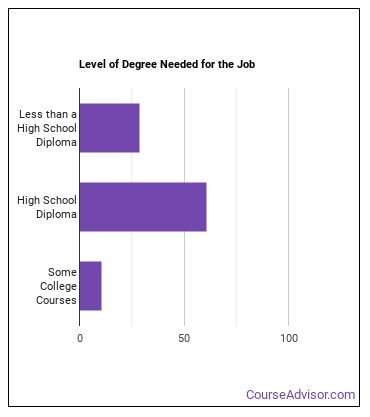
How Long Does it Take to Become a Slaughterer & Meat Packer?
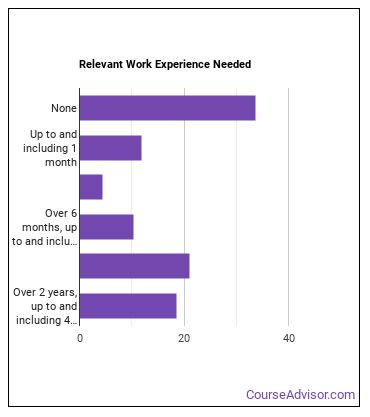
Where Slaughterers and Meat Packers Are Employed
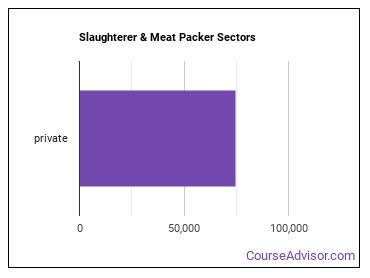
Below are examples of industries where Slaughterers and Meat Packers work:
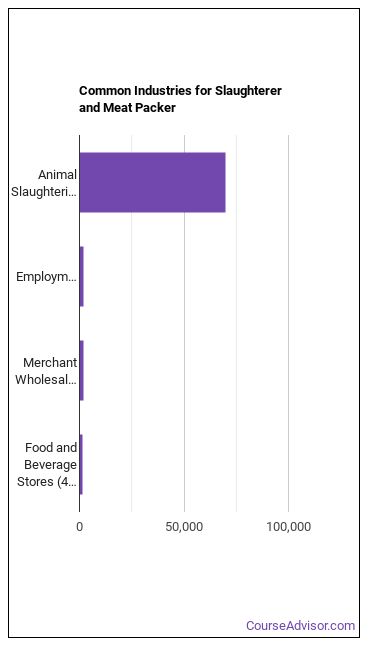
Similar Careers
Those thinking about becoming a Slaughterer and Meat Packer might also be interested in the following careers:
References:
Image Credit: U.S. Army Europe Images via Creative Commons Attribution 2.0 Generic
More about our data sources and methodologies.
Featured Schools
 Request Info
Request Info
|
Southern New Hampshire University You have goals. Southern New Hampshire University can help you get there. Whether you need a bachelor's degree to get into a career or want a master's degree to move up in your current career, SNHU has an online program for you. Find your degree from over 200 online programs. Learn More > |
